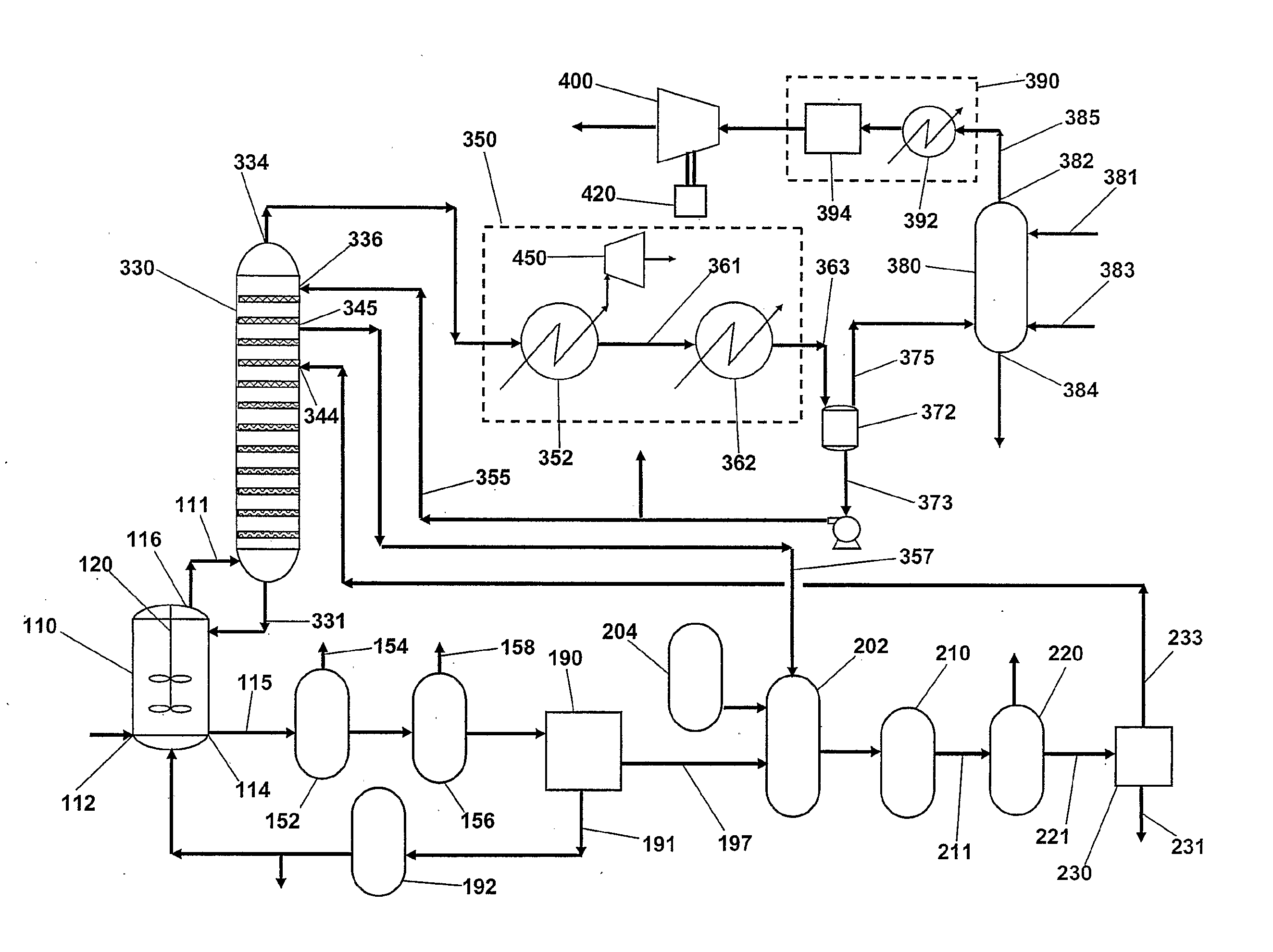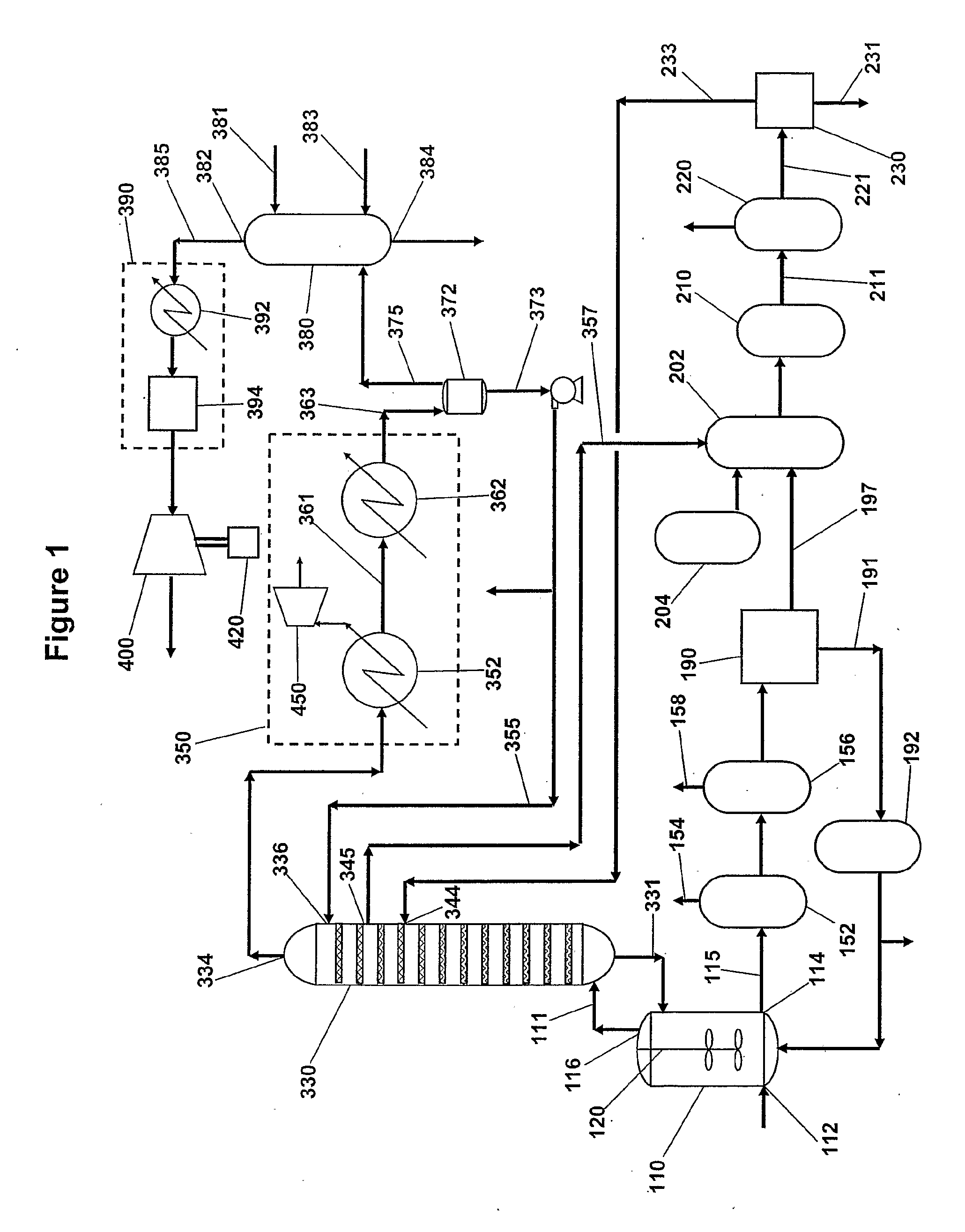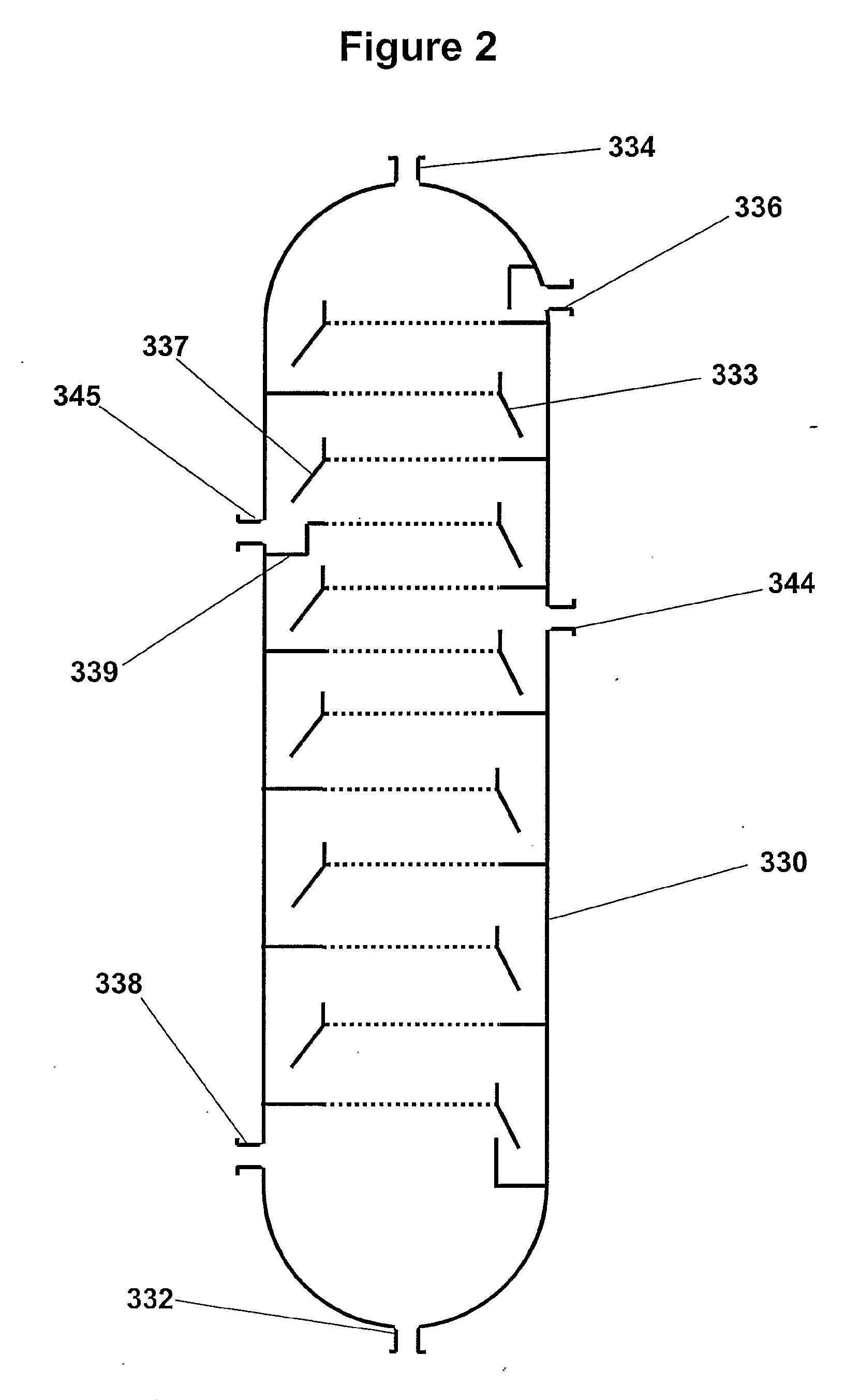[0008] This invention provides a process and apparatus which, in their embodiments and features, provide or enable manufacture of aromatic carboxylic acids by liquid phase oxidation of
aromatic hydrocarbon feed materials with improved treatment of a high pressure
vapor phase from liquid phase oxidation for separation and recoveries of oxidation reaction solvent, water and oxidation by-products. In some embodiments, the invention can also provide beneficial recoveries of energy from oxidation off-gases.
[0009] The invention also provides improved processes and apparatuses for manufacture of aromatic carboxylic acids with
selective control of by-products of aromatic feed materials and of monocarboxylic acid reaction solvent for oxidation generated in liquid phase oxidation and carried over into an oxidation reaction off-gas or otherwise present during off-gas treatment for separation of water and oxidation reaction solvent therefrom. Such by-products are preferentially apportioned according to aspects of the invention to one or more liquid phases comprising oxidation reaction solvent or water that are separated at high pressure from a high pressure
vapor phase from liquid phase oxidation or to a
high pressure gas resulting from separation. Other things being equal, control of such by-products according to the invention can reduce levels thereof present as impurities in liquid or vapor streams derived from off-gases. It also can facilitate return of such by-products to use in process steps in which they are useful more directly or in greater concentrations than if retained without apportionment in liquid and vapor phases resulting from separation.
[0010] In integrated processes for manufacture of pure forms of aromatic carboxylic acids comprising oxidizing aromatic feed material in a liquid
phase reaction mixture to crude product comprising aromatic carboxylic acid and oxidation by-products of the feed material, and purifying the crude product by hydrogenation of a solution thereof in a liquid comprising water, the invention can also eliminate or reduce requirements for demineralized water or pure water from other sources and provide balance between water generated in liquid phase oxidation and water used in purification not achieved in, and substantially improved over, known processes. In addition to substantial separation of solvent and water from oxidation reaction off-gas into liquid phases suitable for return to or use in oxidation and purification steps, the invented process includes embodiments that comprise directing to separation as
reflux a liquid comprising a purification
mother liquor remaining after recovery of a purified aromatic carboxylic acid product from a purification reaction solution. In such embodiments, not only oxidation by-products, for example, carboxybenzaldehyde and toluic
acid oxidation intermediates
convertible to terephthalic or
isophthalic acid as desired
aromatic acid products, but also solvent monocarboxylic acid, such as solvent residues in the impure aromatic carboxylic acid products used to form purification solutions and solvent by-products remaining in gases resulting from separation, can be returned to oxidation.
[0011] Recoveries of solvent monocarboxylic acid, reaction products thereof generated in liquid phase oxidation, unreacted aromatic feed material from the oxidation or combinations thereof present in a high pressure vapor phase remaining after substantial separation of solvent monocarboxylic acid and water in the vapor phase from oxidation are further enhanced according to other embodiments in which a
high pressure gas from separation is condensed to recover liquid comprising water while leaving a high pressure condenser
exhaust gas cooled to a temperature at which one or more scrubbing agents is effective for removing one or more of the feed material, solvent and oxidation by-products of the solvent. The resulting gas can be further treated for separation of feed material and / or such solvent by-products and, in a further embodiment, a stream comprising feed materials, solvent by-products or combinations thereof can be directed to liquid phase oxidation.
[0012] In one aspect, the invention provides an apparatus for manufacture of aromatic carboxylic acids. The apparatus affords improved capabilities for recovery of energy and for avoiding materials losses in
process operation. In some of its embodiments, the apparatus is configured to provide added benefit by reducing corrosivity of process gas streams, such that components of the apparatus and, in some cases, of auxiliary or other
process equipment can be constructed of metals and alloys with moderate
corrosion resistance, such as stainless steels, mild steels or duplex steels, as alternatives to
titanium,
nickel alloy steels and other more expensive, highly
corrosion resistant metals conventionally used in aromatic carboxylic acid manufacture.
 Login to View More
Login to View More 


